Morley's Workshop 379: Holden Exports, Shaky Fords, the Great Red Motor Debate

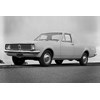

|
Got a problem to fix? Or maybe some advice of your own. In any case join Morley and the rest of the tappet-heads in our virtual shed.
HG 202 memories
Just loving the "discussion" about the red motors in EJs...
FINALLY got to read issue 376 from cover to cover last night shift... I can’t sit on my hands any more and need to add my two-shillings worth.
Regarding the comment about HG Holdens being a test mule for the new 202: About a hundred years ago, fresh out of high school, and working at our local Chrysler Valiant Dealer in Crows Nest, Sydney, one of the front office receptionists, Sandy, and her boyfriend (or hubby) had a HG Holden panel van, with a 202 badge on the tailgate. I remember querying this, and she was adamant, that yes, it was ‘factory’.
This was 1974 and I’m not sure if they’d bought the 1971 build HG new. It was painted, if I recall correctly, that sort of lime metallic green some LJ GTRs and HQ Monaros were finished in. I can recall that the 202 badge was red in colour, not black, like the later cars. The HG was traded in on a 302 XA GS sedan, in Sky View Blue.
Having worked for the next 10 years in both Ford and GM camps, I do recall that quite often, new colours used to "leak" their way on to the outgoing models, prior to new ones being released. Other oddities were trim fabrics and wheel trims/hub caps, or wheel centres, sometimes appearing on the soon to be superseded models. No real reason then, that the engines wouldn’t have made their way into outgoing models too.
Loved the feature on Bob Dunlop. He’s great mate, and a really passionate XY man; loads of fun, and a wealth of info on XW/ZC/ZD/XY and everything else closely related. We’ve had the pleasure of Bob’s company here in WA a couple of times, as the Bob Show belts around the country in the silver XR GT Tribute panel van.
Had to chuckle with the "Your Motoring Years" section, and reader Shaun Jones’ pic of his dad’s almost new X2 HD. The father of one of my best school friends at the time got a brand new replacement for the family EH Special sedan. It too was an HD, just the standard, not a Special. I think it had the 179 option, but it was DTW-613 and I’m pretty sure it came from JN Caldwells Holden in Crows Nest. Small world!
Love the mag, keep up the great work, and the trips down memory lane
Cheers, Dave
WA
Strewth, Dave, you have some kind of memory for this stuff. I can remember most of my dad’s cars’ rego numbers, but I wouldn’t have a clue what the number plate on my mate’s dad’s car was. Hang on a minute… yes I can. My best mate Frosty’s dad had a VC Commodore wagon with LFO 883 plates. Mind you, I can only remember that because we used to reckon it stood for Low Flying Object. It was a 202 auto, so clearly, we were pretty deluded even back then. That said, compared with the first-model Holden Rodeo (non-turbo) diesel tray-back Frosty’s old man used on the farm, that silver-blue Commodore was a dead-set rocket.
Anybody else out there got the same gift for locking away old, long-ago-scrapped number plates? Funny thing for me is; I can remember number plates from 40 years ago, but I couldn’t hope to tell you what the rego numbers on my current cars are. The one I’d be really interested in hearing about would be NSW number-plate GSL 973. That was my old man’s V8 HQ he bought new and I’d dearly love to find the old girl.
Meantime, I reckon it’s interesting that the factory 202 HG you came into contact with all those years ago was also a commercial model. Backs up my theory that Holden was more inclined to whack a new-breed motor in a van or ute as it was less likely to cause a stir. Either that, or commercial vehicles were the last body styles to be changed over on the production line as Holden switched from one model to the next.
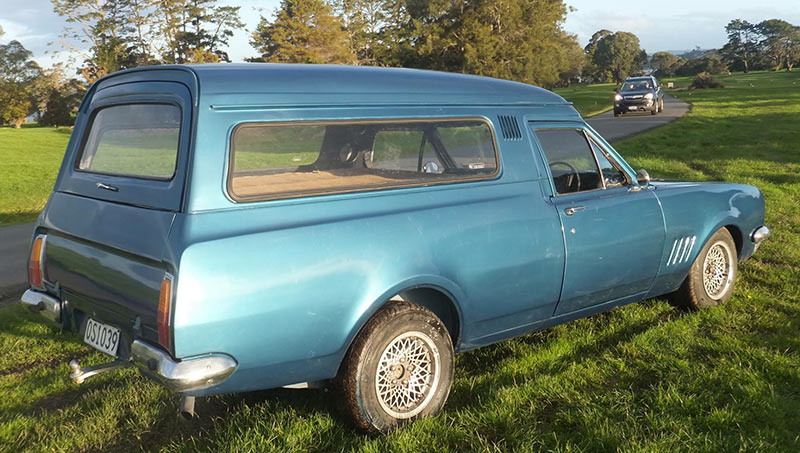
Another 202 HG Pano
I have attached photos of my daily driver work van; a HG Belmont panel-van. As best as I can figure she rolled out of Brisbane in July 71 with a 202 and Trimatic. She’s a good old girl - just keeps on going. During her life she has gained what I believe is a Premier grille (twin headlights and no centre badge) and GTS Monaro front guards, dash (tacho and clock) and bucket seats.
Wayne Banks,
Hmmm. Looks like the theory about Holden using commercial vehicles as guinea pigs for the next-gen engine is starting to hold water, eh? So far we’ve had a factory HG ute or two and a handful of panel-vans with 202s fitted, but not a single sedan or station-wagon that I can recall. Are there any out there?
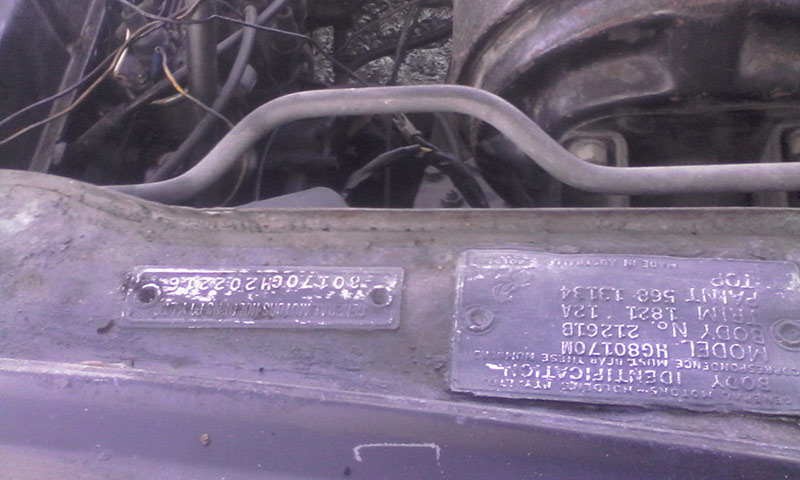
More proof
I can also confirm that the 202 was fitted to the HG commercial range as they coexisted with the HQ sedans and wagons for about six months before Holden introduced the HQ commercial range. My old man wanted a ute and didn’t like the shape of the HQ much so bought an ochre yellow manual HG Kingswood ute and was told by the dealer it would come standard with the 202 six as that was the engine now in production (alongside the HQ sedans).
As a young bloke then, I wanted the car he was trading in but he did the trade without telling me. I waited the six months until early 1972 and bought an HQ panel van with the big six 202. The car he traded without consulting me was a 1964 GT Cortina that he bought new. I still talk to him.
Ross McBride
Riverview NSW
And you still talk to him…? Hells bells, I bet I can guess the topic of conversation. Actually, my old man pulled a very similar stunt on me many years back. He had a straight-as-a-die EJ Ute (no, it didn’t have a red motor fitted) in Tradie Grey with a crash-box and, of course, drums all round. From memory it had about 80,000 original miles on it and it was a peach.
I came home one day to find a vacant space in the driveway. Where’s the ute, I wanted to know. Oh, says the old boy, I sold it to a mate. It had a bit of rust in the floor, under the seat on the passenger’s side. You what?!!!
The rust had started because all the window rubbers were the 1963 originals and they were all shot. But I had a Rare Spares catalogue and a welder and I’d known all about the rust for months and had plans to fix it. In fact, it was me who drilled the holes in the ute’s floor months earlier to slow the rust down till I got around to patching it. What a nong. But, yeah, I still talk to my old man, too.
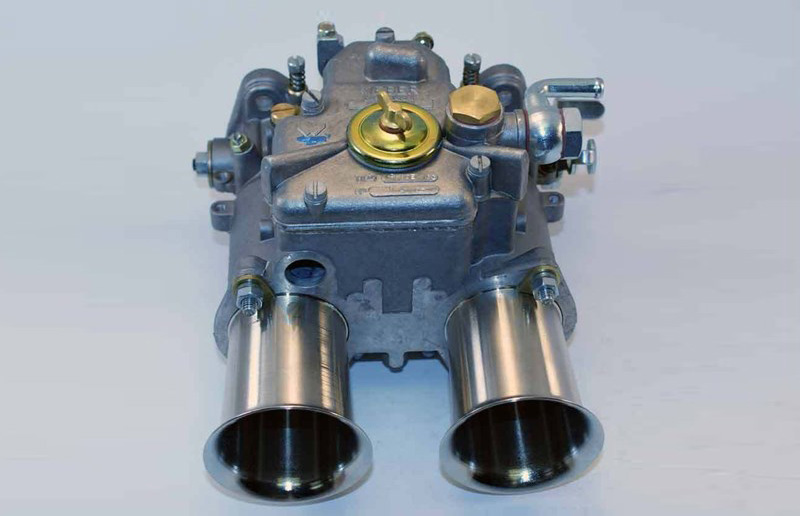
Triple trauma
Having a great time reading about elusive red things. It amazes me how seriously some people take it. Life is too short! I hope it takes years before any hard evidence is found as I am sure a lot of people are having a lot of fun. (It’s the vibe of the thing, you know, like Mabo. Or VN Commodores.)
Anyhow, I was just wondering if you can shed some light on the triple Weber carbies I bought on eBay for a VH Charger R/T replica that I am building.
They came fitted to an aftermarket manifold and the first two are 45DCOE9 and the last one at the back is 45DCOE13. The seller said they were off another 265 Hemi and worked well. Could the DCOE13 be a heat resistant model for cylinders five and six or has someone just put together any 45mm side drafts they could find with one being odd?
It’s a good manifold by the way; in three separate sections with runners that are slightly longer and higher rising than the original R/T manifold which gets them further away from the extractors. Do you have any idea what brand the manifolds could be? They have one, two and three marked on them for sequence.
Keep up the good work UC.
PS: There were no red markings on the carbies or the manifold to be found.
Pete Nicol,
Geelong
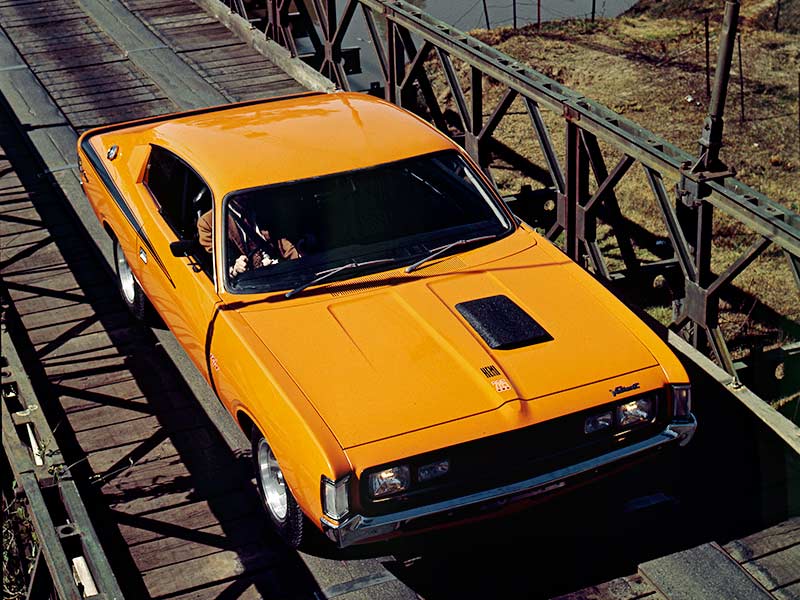
Phew, you’ve opened a can of worms here, Pete. The subject of Webers for a Hemi 265 is a topic that has been discussed at extraordinary lengths yet, to my knowledge, has never been fully explained. So pull up a comfy chair and grab a coldie, ‘cos this could get a bit intense.
Now, for starters, the Webers in question are 45mm DCOEs. Fair enough, but it’s the nitty-gritty where the web starts to get really tangled. As you’ve correctly identified there are DCOEs and then there are DCOEs. And the individual part numbers do seem to make a big difference when it comes to the Hemi six.
For a start, the Hemi is one of the few engines in the world to mount side-draught Webers solidly rather than on soft-mounts (the theory being that the inline six is so inherently smooth, the carbs don’t need this shock-absorbing soft-mount). But as many people who have tried to mount triples on a 265 will know, it aint as simple as it sounds. Not if you want it to run properly, anyway.
Now, the interesting thing is that Chrysler found this out the hard way back in the early part of 1970. Back then, Chrysler’s general manager of driveline engineering, a fella name of Mike Stacy (who was still in the game in the 1980s when I started to terrorise him as a young motoring journo) suggested that the Hemi six could be tuned to offer Chrysler Australia a proper performance car without the weight and cost of going to a V8 engine. Once he got the green light, the cunning Stacy sent three different minions out to three different carby shops to buy a single 45 DCOE each. The idea was to prevent anybody getting a sniff that the Chrysler boys were out shopping for triple Webers.
Anyway, the upshot was that they bolted the carbs to a 265 and fired her up. It made lots of power at wide-open-throttle, but ran like a bag of chisels everywhere else with a crook idle and bugger all low-speed refinement. They messed about for weeks, too, but eventually decided that, having been brought up on Carter two-barrels, they weren’t the blokes to make it work. But what’s most amazing is that the solution was to ship a whole car – a VG Pacer four-door, if you must know – and an engineer – Chrysler’s race program manager, John Ellis – all the way to Weber’s factory in Bologna. Yeah, the Bologna in Italy. Sounds extreme, doesn’t it? But having met Stacy, I’m here to tell you that if he couldn’t sort the carbs, then it was only Weber who could have.
Even once the car had been driven cross-country over Europe to Italy, it still took four months of full-time graft to arrive at the proper specification for the carbs. They fiddled around with air-bleed holes, jets and being very careful with balancing the mixture on each choke. And then John Ellis would blast off into the Italian distance for a few hundred kays of testing and evaluation. And that, to me, is the reason that you can’t just bolt any old DCOE on a Hemi six and expect it to sing.
These days, the clued up blokes reckon the best idea is to run a Bakelite spacer between the carb and manifold which maintains the solid mounting but acts as an insulator against heat. And those same bokes now reckon the gun part number is a 45mm DCOE 152G carby which features four progression holes for smoother transition from the idle circuit to the power jet and, therefore, improved driveability.
So where does that leave you? I’m not sure, to be honest. I’ve not heard of using a different third Weber for the – potentially – hotter running cylinders five and six, so my first thought would be that somebody has simply packaged up the first three DCOEs they could find and called them a set.
I know a bit about this stuff, because I messed around for about five years with a set of 45mm side-draught Dell’Ortos on a hot Hemi six. Frankly, I wasted half a decade of my life because those damn carbs just refused to be tuned. The 265 would drop a cylinder for no reason and then drop a different one the next moment. It would kind of run wide open, but everything else was a dead loss. Almost drove me to drink.
In the end, I realised that since I wasn’t building an R/T six-pack replica, I was probably kidding myself. So I did the only sensible thing and bolted on a modern, vacuum secondary four-barrel. Probably doesn’t have the same top-end surge, but it idles cleanly, starts easily and uses less fuel. They’re pretty good these latter-day Holleys y’know. Mind you, a single four-barrel will never elicit the oohs and aahs of onlookers that you get when you pop the bonnet on a big, rampaging trio of Webers. Your call. Let me know how you go. I’ll give you five years to nail it.
Which reminds me, anybody want a set of fully reconditioned 45mm Dell’Ortos on a good Hemi manifold complete with linkages?
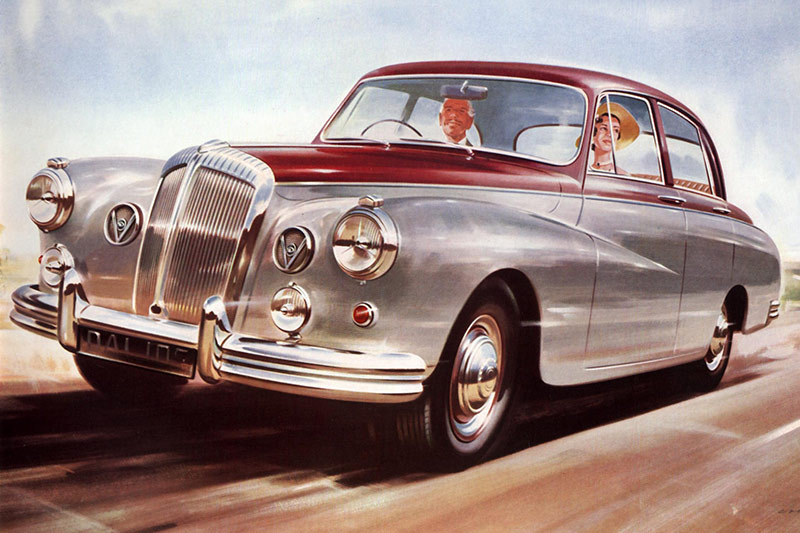
On Sleepers
Regarding your question about the sleepers we’d all like to build: I would like to do what Jaguar should have done in the 60s: Get a Daimler 250 (same body as Jaguar 3.8) and drop in the Hemi V8 out of the Daimler Majestic . The 4.5-litre V8 is only 36 kilos heavier than the 2.5-litre V8 in the 250. This would result in a car 45kg lighter with 90Nm more torque than the 3.8 Jag.
The Majestic weighs 1840kgs and would do 0 to 100 km/h in 10 seconds; about the same as the 3.8 Jag. The Daimler 250, meanwhile, is over 400kg lighter than the Majestic, so seven seconds would seem possible and it should also handle better than the Jag.
The Yanks aren’t the only ones that had V8 Hemis: The Edward Turner-designed Daimler engines should have been utilized by Jaguar but instead they were buried. I know it’s not a real sleeper, but it would certainly be an entertaining drive.
Steve Perkins,
I’m not sure why you don’t think this combo would be a real sleeper, Steve. Because it sounds right on the money to me. Okay, it’d be a period-correct sleeper, but what’s wrong with that?
And you’re right, those Turner-designed V8s were lovely little gadgets. The 2.5-litre unit in the Daimler 250 wasn’t exactly quick off the line, but it was a charming little engine to drive out in the sticks. For those who wanted to blast away from the lights or needed a quick getaway car, then the 3.8-litre Jaguar Mark 2 was the weapon of choice. In fact, after the Ford Transit van (for different reasons) the 3.8 Jag was the 60s Pommy blagger’s first choice in wheels. It’s this marketing/performance regime that is probably the reason the Daimler 4.5-litre V8 never found its way into the Mark 2/Daimler 250 bodyshell.
And did you know that Edward Turner was the same Edward Turner who designed the fabulous Triumph twin motorcycle engines from as early as the 1930s? ’Tis true. Respect.
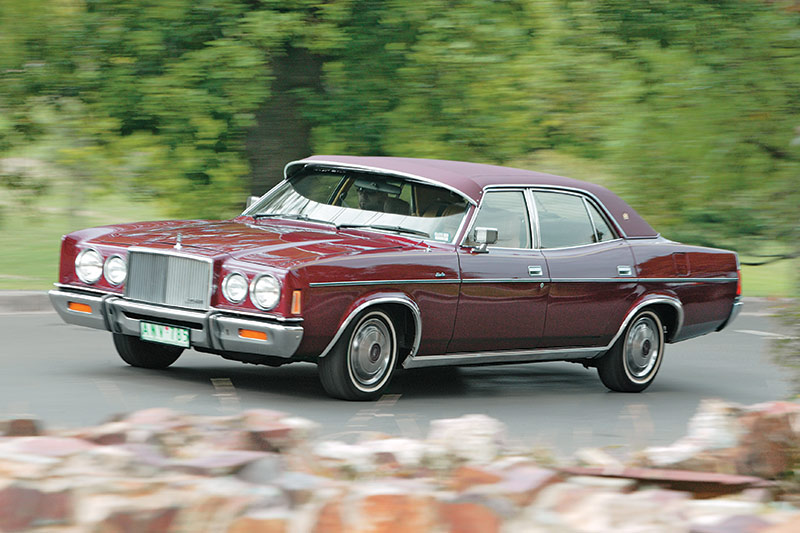
Ma favourites, you ask?
Love the mag, can’t wait to read each issue. I’d never been into magazines, but picked one up (Unique Cars) about 10 years ago on the side of the road in a recycling rubbish pile and haven’t stopped reading it since. True story!
I’ve owned an 1964 EH with the 179HP motor, but have not got a clue about the EJ with a red motor. I reckon they’re out there, though.
As for vibrations… well, I had a 1978 Ford LTD Town Car. Man did that thing give me the willies! At 105km/h she started to vibrate and got worse the harder I drove her. To "fix" the problem I started with the wheels, tyres, new shocks, new harmonic balancer, uni joints, axles, tail shaft balanced, new diff, trans overhaul, then replaced the tail shaft and even a new motor from another LTD (fully reconditioned, of course) and guess what? Still vibrated at 105km/h. I ended up selling it! The only thing I didn’t replace or recondition was the power-steering pump.
Anyway, as for my absolute favourite car of all time, it has to be a 1954 Buick Skylark. Black of course and a red leather interior with a white top. These cars have to be one of, if not the, sexiest cars of all time. With only 836 ever made – and who knows how many have survived – it’s as rare as. I have a 1954 convertible red with white top, close but no cigar! Keep up the good work, it’s a great read.
KL
Jeez, you’re hard marker, KL. I reckon red with a white top would be close enough for me, but keep your eyes out for a black-over-white Skylark in the adverts in Unique Cars. You never know what’s going to crop up. Or you could check what Andy Enright’s featured in this month’s Auction Action. I mean, let’s face it, you discovered the literary love of your life (this mag) while picking over some poor sod’s hard-rubbish heap, so you just never know where gems will turn up, eh?
I admire your patience with your LTD, too. I’d have consigned the mongrel to the scrap-heap long before it occurred to me to try a whole new engine to fix a vibration at speed.
That said, have you seen the ad on telly where the bloke disassembles his whole car to find a rattle that was driving him crazy, only to find his bride had left a pair of earrings in the ash-tray? That must have happened to plenty of us, including UC readers. Anybody out there game to put their hand up?
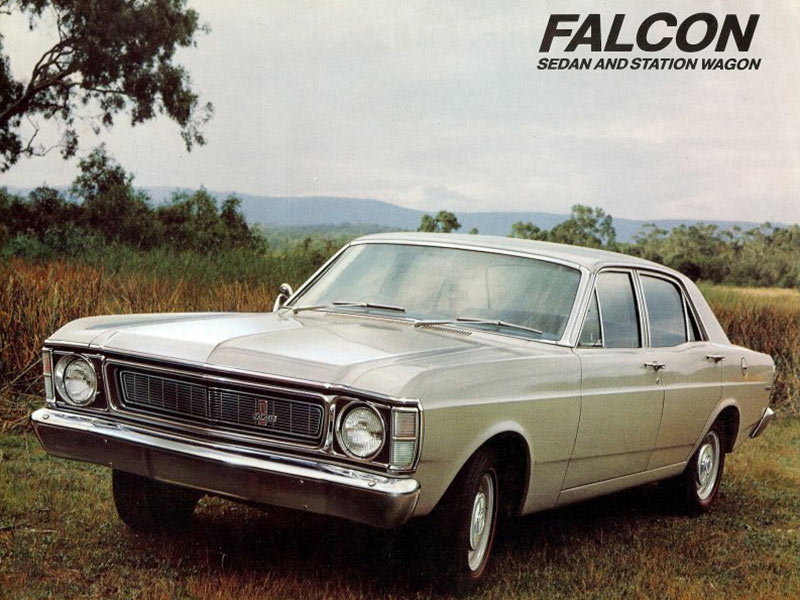
Basket (weave) case
Just got back from working overseas and was reading one of your mags. I have a nice genuine XW Fairmont in Broome but I cannot find the upholstery materials to redo my seats. The car is Grecian gold and the seat colour is gold with a basket weave design. I have tried everywhere for the last few years and I’m told only five of these XYs came out with this colour combination. Can you advise best place to try for some gold basket-weave?
Bob Pollard,
Broome, WA
Not sure how you’d substantiate the claim that only five XY Fairmonts were Grecian gold over gold trim. Maybe a local Falcon club has the build records and could tell you for sure. That said, when I picture that colour combo in my mind, I can kind of see why the numbers might have been low. And, Bob, I’m not having a shot at your car, but it occurs to me that when you had a choice of all those wild late-60s and early-70s colours, there wouldn’t have been too many buyers that went for gold on gold.
Meantime, I think the solution to your problem is to bite the bullet and forget about finding the original Ford-part-number basket-weave trim. See, I contacted the president of the GT Falcon Club of Victoria and asked where I could get original seat-trim vinyl for an XW. I think he’s still laughing. So I then asked Chris at Blackmans Leather in Geelong (a high-end automotive trim shop) and asked same the question on your behalf. Chris reckons that there is still some of the original trim floating about, but nobody will tell you who has it, nor will the owners be very likely to sell you any. And even if they did, the price would probably cause your wallet to burst a blood vessel.
The solution, says Chris, is to go for a reproduction version of the basket-weave which he reckons is pretty nice and won’t necessarily force you into the poor-house. How nice? Well, Chris is a Ford man himself and his restored XA Coupe uses the repro basket-weave vinyl. You can talk to Chris on 0499 772142. I know he’s on the wrong side of the country, but he should be able to put your straight.
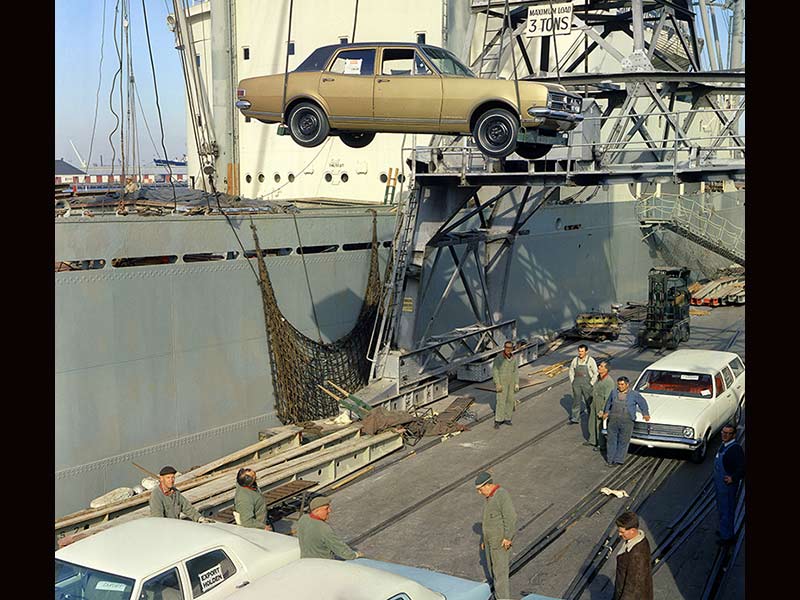
Springbok Holdens
A friend of mine has a South African HK Kingswood. It has a 140mph speedo and full gauges. The engine is a 250 Chevrolet six. I also have the only South African 71 HG Chevrolet Kommando Wagon in the country it also is factory 250 cubic-inch.
Geoffery Gregory,
via facebook
Holden has been an exporter of cars for a lot longer than the last couple of decades when various Commodores were shipped to the Middle East as well as being sold in the US as Pontiacs. And as far as South Africa goes, there’s been a long tradition of selling Holdens over there, including sending some over as CKD (Completely Knocked Down) kits for the South Africans to assemble. Between 1969 and 1973, Holden Monaros were sent to South Africa as kits and assembled as Holden Monaros from ‘69 to ‘71 and as Chevrolet SSs from ‘71 to ‘73.
There was also a luxo model called the Constantia (sounds like there’d be a pill or a cream to fix that) and, as you’ve already identified, Kingswood-based models called the Kommando. The Monaro-based cars were powered by either the Aussie 308 or a 350 Chev, while the Kommando and Constantia were either 202, 308 or Chev-six powered.
Just lately, a raft of Chevrolet SSs have been imported back into Australia, largely as a result of the value of local HK-T-G Monaros going approximately through the roof. People have discovered that they can get their hands on one at the right price (because they don’t have the cult following in South Africa that they do here) and they’re also a little bit different to the local stuff with twin headlights and trim variations. But the Kommando with its Chevy-six engine, now that’s something different all over again. How about a photo of the engine bay?
By the way, Holden exported cars to a huge range of countries, including places as diverse as Burma (now Myanmar) and the Caribbean and even made some in left-hand-drive to account for the market they were to be sold into. The weirdest place I ever saw an Aussie Holden was way up north in Thailand, near the Myanmar border, on the edge of the notorious golden triangle. It was about a million degrees and 110 per cent humidity, so I stopped in a village to buy beer from a bunch of giggling schoolgirls and spotted an LC Torana parked in a driveway. I didn’t look like it had moved for a long time, but an LC Torana it most surely was. Light blue, if memory serves.
Which leads me to my next question for you lot: Where’s the most far flung, out-of -the-way place you’ve ever seen an Aussie car in your travels. Answers to the usual address please.
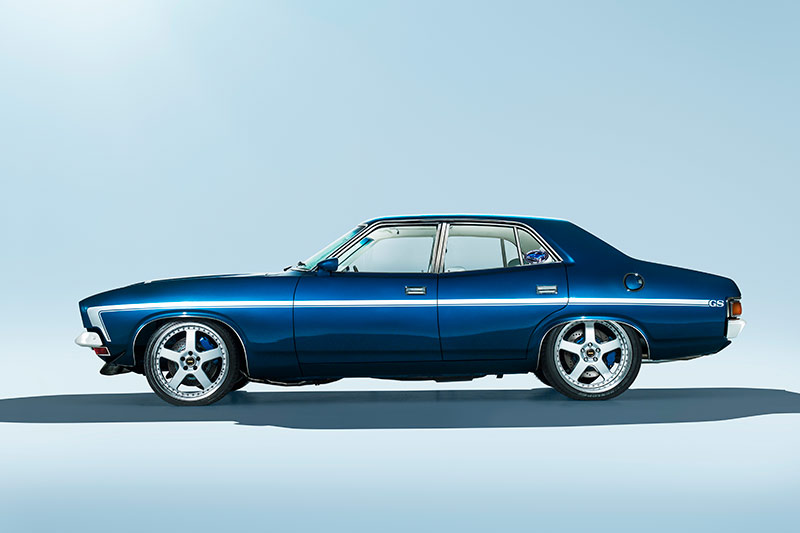
TIP OF THE MONTH
HEARD THE expression ‘go big, or go home’? Yeah, well, I reckon sometimes it doesn’t apply. I’ll start with angle-grinders. Thanks to plenty of cheap grinders in shops these days, there exists the temptation to go for a nine-incher when a four-inch grinder would do. Here’s my advice: Stick with the four-incher. For most jobs, a four-inch grinder is plenty.
But as well as being overkill for those same jobs, a nine-inch grinder is a dead-set weapon of mass destruction. Seriously, these things are lethal. Okay, even a four-inch job will murder you if you give it the chance, but a nine-incher doesn’t always ask for permission before it breaks free and slices its way to freedom. Ask somebody who works in the emergency department of a hospital about nine-inch grinders.
Now, same goes for alloy wheels, I reckon. To be honest, I’m a bit over the old-car-on-big-blingy-wheels thing. It was funny for the first six months, but that roller-skate look is now seriously old hat. I blame the late Boyd Coddington for the trend that saw 20-inch five-spokers bolted on to everything from 57 Chevs to rat rods. It is, I reckon, a question of scale. There’s a very tasty EH Holden I pass every morning on my way to the Melbourne Bloke Centre; it’s a sandstone colour with a white roof and, up until last week, it was wearing a set of 15-inch Superlites. Looked brilliant. Kind of a cross between a resto-mod and a Group N racer.
This week, though, the bloke has obviously saved up his pocket money and lashed out on a set of 18-inch, five-spoke numbers wrapped in liquorice-strap tyres. Yeah, it has stance, but it always did. And, for mine, those bright, blinged up 18s are just too much for the rest of the picture. Bear in mind that a current-model Holden Cruze is about the same size as an EH and that a modern Corolla is about as big as an LH Torana and you can see that old cars were just physically smaller. So don’t overdo it, okay? Just sayin…
Reach Morley at uniquecars@primecreative.com.au
Unique Cars magazine Value Guides
Sell your car for free right here
Get your monthly fix of news, reviews and stories on the greatest cars and minds in the automotive world.
Subscribe

.jpg)








.jpg)

